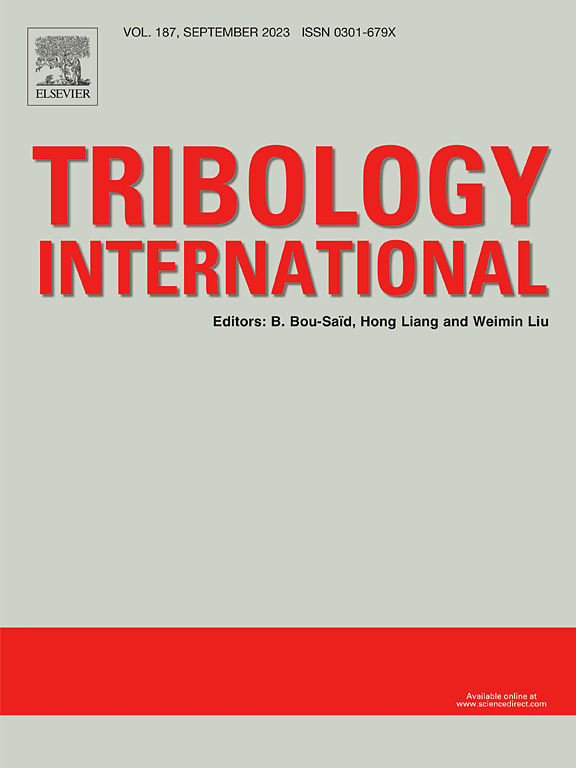Effect of check valve on the performance of hybrid journal bearing considering starvation and cavitation
IF 6.1
1区 工程技术
Q1 ENGINEERING, MECHANICAL
引用次数: 0
Abstract
The paper proposes a new numerical method to analyze the performance of hybrid journal bearing with a check valve, considering starvation and cavitation. The approach ensures the recessed unidirectional flow under the check valve effect and avoids the recessed negative pressure by introducing starvation. The flow conservation in the recess is guaranteed, and the JFO cavitation model is used to calculate the cavitation, which ensures mass conservation on the bearing land. The eccentricity ratio, attitude angle, starved region, and cavitated area of the hybrid journal bearing with a check valve are compared with that without a check valve concerning external load, rotary speed, and supply pressure. Relative pressure distribution, starved features, and cavitated characteristics are represented to explore the difference in the performance between the two bearings. The results indicate that the hybrid journal bearing with a check valve has better properties in load capacity, starvation resistance, and cavitation resistance under the recessed inlet pressure beyond the supply pressure. The reason is attributed to increased recessed pressure and decreased hydrodynamic pressure by the check valve.
求助全文
约1分钟内获得全文
求助全文
来源期刊

Tribology International
工程技术-工程:机械
CiteScore
10.10
自引率
16.10%
发文量
627
审稿时长
35 days
期刊介绍:
Tribology is the science of rubbing surfaces and contributes to every facet of our everyday life, from live cell friction to engine lubrication and seismology. As such tribology is truly multidisciplinary and this extraordinary breadth of scientific interest is reflected in the scope of Tribology International.
Tribology International seeks to publish original research papers of the highest scientific quality to provide an archival resource for scientists from all backgrounds. Written contributions are invited reporting experimental and modelling studies both in established areas of tribology and emerging fields. Scientific topics include the physics or chemistry of tribo-surfaces, bio-tribology, surface engineering and materials, contact mechanics, nano-tribology, lubricants and hydrodynamic lubrication.
 求助内容:
求助内容: 应助结果提醒方式:
应助结果提醒方式:


